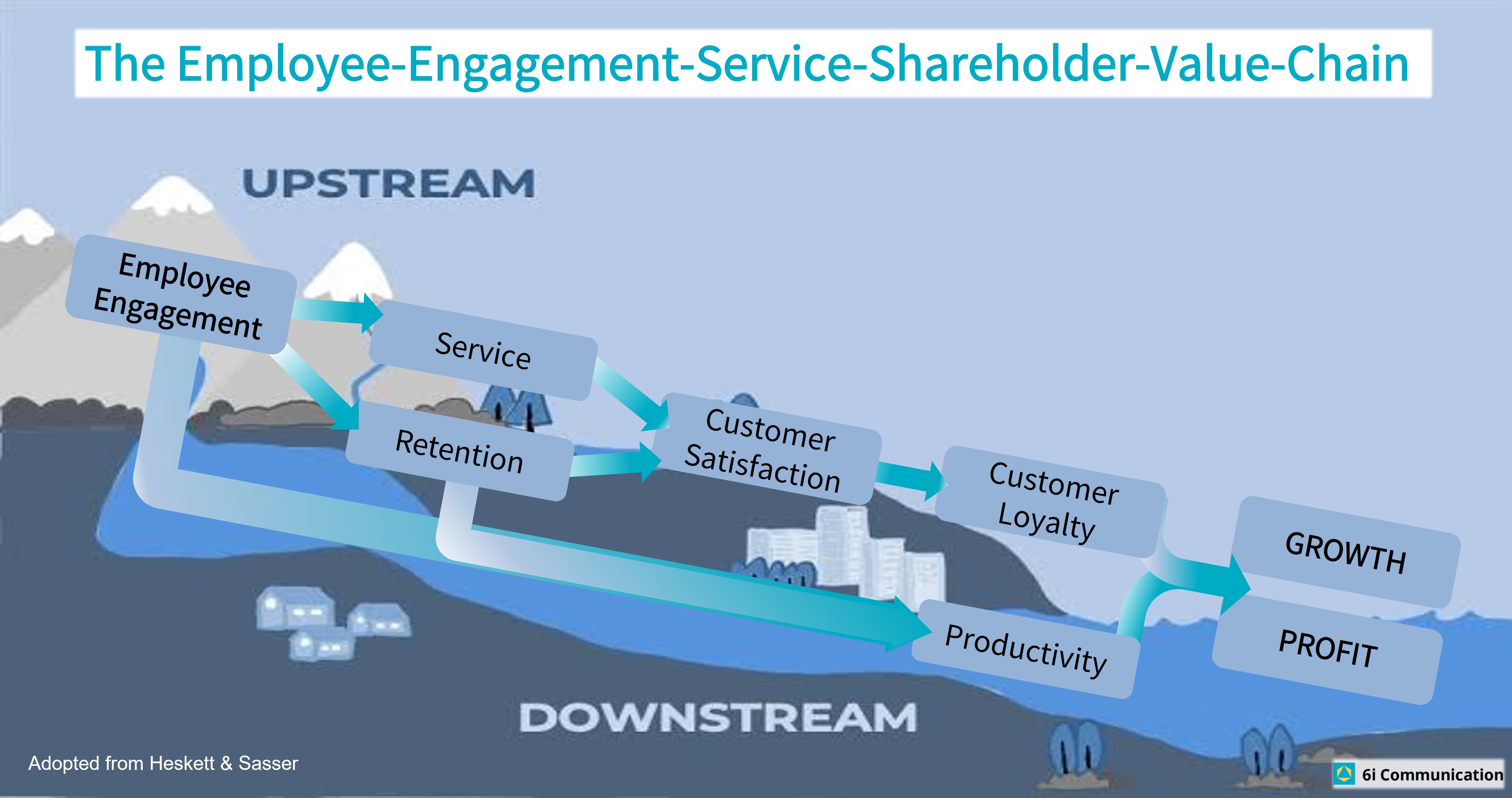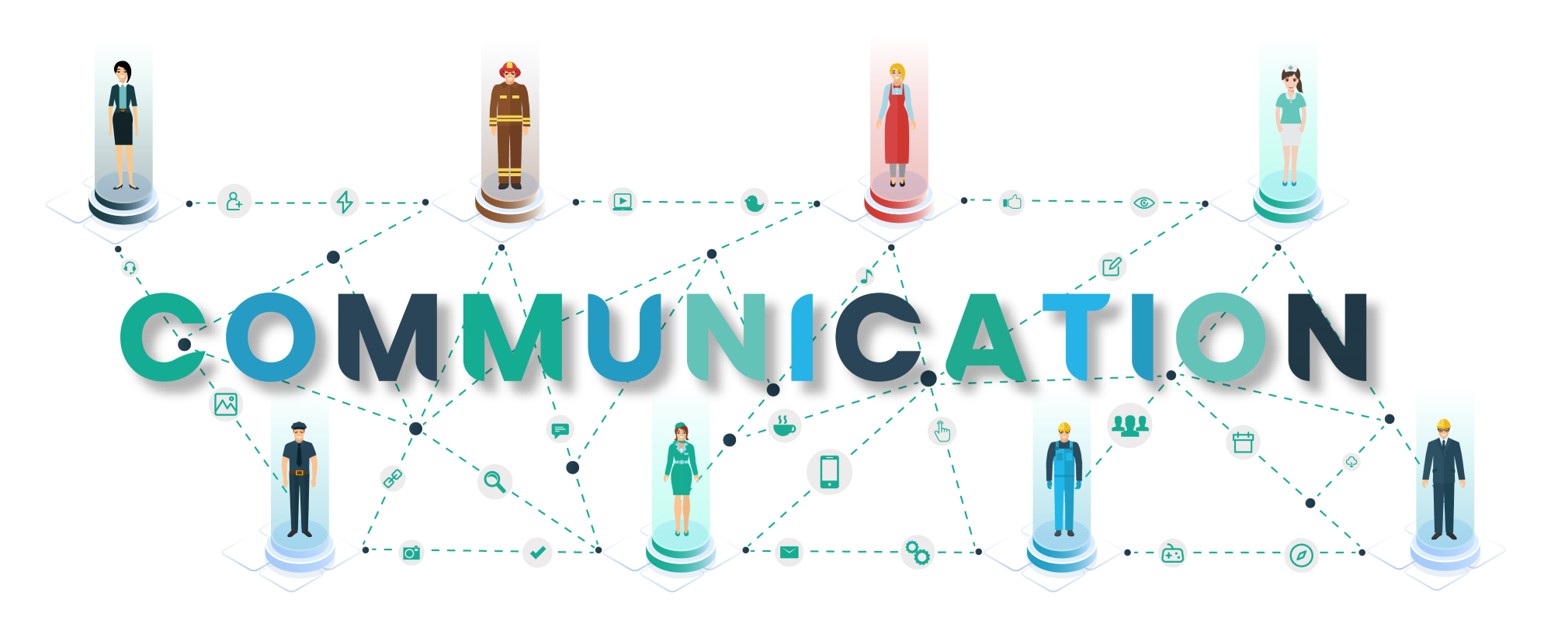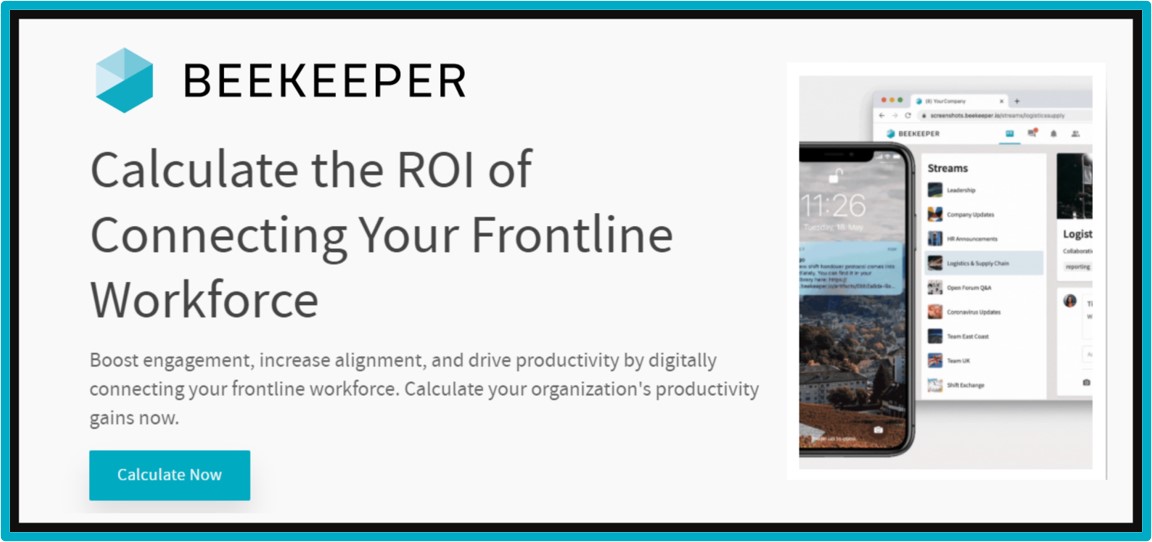In leadership improvement is not about doing more things right, but about doing fewer things wrong.
Don't just look for things to add.
Look for things to eliminate.
Here are 10 things you might want to stop doing to progress employee engagement among your team members:
3) Forgetting your frontliners
4) Not seeing employee engagement as an instrumental part of the bottom line
6) Trying to motivate your people with more money
7) Letting Internal Communications become an afterthought
8) Not closing your narrative void
9) Not letting inconvenient truths reach senior leadership
10) Seeing employee engagement as a one-off event
1) Monocausotaxophilia
The love, or obsession, of single causes that explain everything is called Monocausotaxophilia.
It is one of humanity's most common cognitive errors.
Don’t fall for it.
There is none.
There is no "silver bullet" when it comes to boosting employee engagement in a sustainable manner.
But there are a few irrefutable truths:
- Increasing engagement isn’t for the passive. Employees need active, purposeful approaches, tools and support to foster their engagement. It ‘takes two to tango’ – employer and employees.
- The workplace is one of the most important social systems for individuals, right after one’s immediate family and closest friends.
Academic research has long demonstrated that social relationships are associated with less stress, greater wellness, and higher quality of life. Organizations that provide opportunities for employees to connect with one another and develop workplace friendships find that their employees report higher levels of job satisfaction and psychological safety, all of which increase organizational commitment and engagement.
Relationships are the real currency of workplace engagement.
“Life is all about relationships. And work is no exception.” – Andy G. Schmidt
2) Not ‘ARMing’ your people
No, no, I am not implying that you should get them ready for any battles.
I am talking about deploying the Self-Determination Theory to better your people’s work-life.
That SDT-Theory provides a near-perfect roadmap to contentment and to psychological happiness.
We need these three things:
- Autonomy — you are the boss of your life
Be deliberate in what you do and how you live. Generally speaking, external motivation is inferior to intrinsic motivation. When you are pressured or bribed into doing something, you lose autonomy and the fighting spirit to be great at it.
Micro-managing kills autonomy. Not a single person in the history of persons likes being micro-managed. Flexibility is good. Autonomy is better. - Relatedness — human connections are everything
There are two components of relatedness:
Quality, individual relationships.
Feeling part of a community.
We can’t live in a silo. We do not have a choice. We need people. It’s in our DNA. Be part of a community. Leave bad relationships. - Mastery / Competency
From the day we are born until the day we die we are wired for growth. Stagnation feels lousy.
Do you encourage your people to do things they are good at and get better at things they suck at?
We thrive and love what we do when those three core needs are satisfied – when we are ARMed.
How are you going to make work work better today - for yourself and the people under your care?
"Worry less about making a mark. Worry more about leaving things better than you found them." – Austin Kleon
3) Forgetting your frontliners
It is far too easy to forget about the remote workers because you’re not seeing them every day.
Your frontliners should be of primary importance to the business, considering they are often customer-facing and your brand ambassadors.
Let’s face it. We see their jobs as routine and low-skilled. For far too long frontline employees just frankly haven’t been treated that well by their employers, or even by society itself.
For example, how often do you assess whether your internal communications are being read, understood, absorbed and acted upon by your frontline employees?
Effective communication is measured by the impact it creates on the recipient.
If the recipient does not understand or comprehend your message, then that key content has not been delivered effectively, decreasing the overall value of its worth and purpose.
Often your frontline employees do not receive first-hand - or should I say - first-mouth information because they lack a corporate email address and can’t attend town hall meetings.
What if there was a way to monitor engagement, give your valuable frontline employees a voice, share feedback, take fast action with management and run transparent communication campaigns with your entire frontline workforce — on one platform, without sending a single email?
The opportunity: Many of us already spend more time on our phones than on our laptops. All of the frontliners spend most of their free time on their phones.
So having a really good, native mobile communication App is more important than ever, particularly if you have a large percentage of frontline, deskless workers.
If you can help your frontline workers feel connected to the rest of the team and find opportunities to collaborate on important projects, then you’re doing it right.
If we look at the true sustainability of a company, it rests upon the frontline staff.
A leader's sudden insight: 'My lowest-paid employees are the ones taking care of my customers and ...'

4) Not seeing employee engagement as an instrumental part of the bottom line
I get it. It’s hard to get corporate boards and executives to see the measurement of morale, engagement, inclusion and overall culture as important to the bottom line.
Once you do that, then it’s easy to roll out a cost-effective governance to get started.
Just like safety and cybersecurity having metrics around engagement can be another proxy for “discipline and performance”.
This is where new technology plays an important role.
Seeing how engaged the workforce is at any point in time, in any region or function enables the organization to adapt its tactics at a granular level and target different elements of the workforce in different ways.
The board needs to know the current employee engagement trends and hold CEOs accountable for it.
In the war for talent, highly engaging workplaces matter.
Company reputations are fragile: Employees keep track of how they are treated when the chips are down, and they share those notes with their social media networks. A company that goes from angelic to draconian will find that its reputation doesn’t recover as quickly as its bottom line. Ignoring employee experience now will haunt your Glassdoor ratings for years to come.
And every company wants to stay off the ‘worst places to work’ lists.
Employee engagement used to be optional. Now it is the core task of managerial leadership in every company.

Research confirms that higher Employee Engagement leads to better bottom-line results.
What an opportunity to make the company better by prioritizing and staying focused on the bottom line.
Refresher: Employee experience is what the organization gives and engaged employees are what the organization gets in return.
Employee experience is the input. Higher employee engagement is the outcome - if done right.
5) Not busting bureaucracy
Bureaucratic organizations undermining human autonomy, resilience and creativity won’t ever have the highest employee engagement levels.
Bureaucracy paralyzes the organization and frustrates employees.
You see, we want to make our own decisions. It's what we do in our personal lives on a day-to-day basis. We take care of ourselves and we support those that are close to us. We do groceries, buy cars and get mortgages for our houses.
But the moment we enter the office, we are suddenly exposed to a huge amount of rules, procedures and protocols to follow.
All of a sudden we are treated like toddlers.
Some more progressive companies have started to replace a chain of command with a chain of trust and radical transparency.
They leverage the core of every organization – humans.
Research consistently shows the benefits of autonomy, freedom and trust. For the last 60 years already – yet nothing changes in most organizations.
Why?
What do you personally fear most when poking the bureaucratic beehive?
Reminder: No one is too small to make a difference. As an employee every time you bump into a rule, it takes away a chance for you to make a choice or a decision. And it becomes “your” company, not mine and not ours.
“Learn the rules like a pro, so you can break them like an artist.” — Pablo Picasso
6) Trying to motivate your people with more money
Monetary incentives are great!
They put us in a happy mood and give us something to feel good about.
The only problem is that feeling is fleeting.
Incentives that are not related to advancement and having an impact on the organization are typically a temporary fix.
Money does not create employee engagement; it gets the right people in the door, but it’s not necessarily what keeps them there or engages them to do their best work.
Research interestingly shows no correlation between how much we are paid and how engaged we are: You can be engaged or disengaged wherever you are on the career ladder.
Let's get the elephant out in the open: 𝐏𝐚𝐲 𝐢𝐬 𝐧𝐞𝐯𝐞𝐫 𝐚 𝐩𝐨𝐬𝐢𝐭𝐢𝐯𝐞 𝐟𝐨𝐫𝐜𝐞 𝐨𝐧 𝐞𝐧𝐠𝐚𝐠𝐞𝐦𝐞𝐧𝐭.
Life would be easier if it were, but you just can't buy people like that - not many people anyway.
You can never create engagement by paying people more.
Pay is a satisfier but not a motivator.
More money has been shown to reduce dissatisfaction, but it doesn’t drive happiness or increased engagement for the employee.
However, you can destroy or disable engagement in a blink of an eye using pay.
Let’s stop trying to pay people more to stay in a bad environment and instead focus on creating a working environment that people actually want to be part of.
Leadership Advice - Every single day, imagine that your employees are volunteering to work for you. Treat them accordingly.
NOTE - The above assumes that people are paid fairly. If not, nothing else matters!
7) Letting Internal Communications become an afterthought
In the end, everything comes down to how good the communication works within any social group, be it a big company, a department, a team or simply one-on-one communication.
Only by having a strong focus on how everyone communicates with each other, can you make sure to create and maintain the culture that you are looking for.
If neglected, you will still get a company culture - just not the one you were aiming for!
The most effective way to build trust and show that you care right now?
By banking on a strong and speedy communication strategy. You need to demonstrate agility in adapting and deploying accurate communications to all of your stakeholders at a moment's notice.
Do you have a dedicated person for employee communications?
The best have the skills of several professions: A bit of journalism, as good writing is elemental, as is striving for accuracy and context. A bit of psychology, to understand human behavior. Lots of anthropology, to understand the role of group behavior and culture.
Internal communications has become an absolutely critical function for any company employing humans.
Particularly now when it is foundational to keep your (unexpectedly) dispersed workforce in the loop and engaged.
FACT - Effective communication is measured by the impact it creates on the recipient.
"Companies with highly effective internal communication practices enjoy 47% higher total returns to shareholders compared with the firms that are least effective at communicating." - Willis Towers Watson study

8) Not closing your narrative void
Got a question for you: Are your people confused?
How would you rate the strategic alignment all around your organization?
Not just among your management team but with your frontline workforce. You know, the ones delivering the actual customer experience.
Is there too much white noise on your existing communication channels?
Is readership of those traditional outlets (notice board, newsletters, intranets and yes, even emails) minimal?
Could that be the breeding ground for your narrative void?
Just because you know the story doesn’t mean your team does!
Companies that calibrate their activities around a common story don’t just state their mission.
They are on a mission.
They don’t just dream about a better story.
Their culture tells one.
Without a unifying narrative at the center, there is nothing to inspire the people beyond the status quo.
This lulls the company to sleep and eventually to death.
With a story-inspired narrative, however, ordinary jobs become extraordinary adventures.
Unfortunately, the days of catching up around the water cooler are gone. So, what about bringing that “water cooler catch-up” and your unifying narrative to your people?
To every single one of them?
A mobile-first employee App will achieve that for you.
In uncertain challenging times like these, employee communication is often the thin thread that holds everyone & everything together.
“The difference between mere management and leadership is communication.” – Winston Churchill

9) Not letting inconvenient truths reach senior leadership
How has your employee listening been since COVID-19 rattled our old normal?
Misalignment can be traced back to the failure of leaders to have an honest and productive organization-wide conversation.
Employees below senior management collectively know a lot about why their strategy or organization is not effective.
They cannot, however, convey their understanding to senior management.
Sometimes, it is clearly unsafe, career-wise, to be the bearer of bad news.
Other times, management lets people complain but doesn’t take the complaints seriously.
Organizationally lifesaving information cannot get where it needs to go when management has not institutionalized a disciplined way to receive it.
This information needs to be delivered to leaders regularly, not only in sufficient detail but also with enough urgency and coherence to provoke action.
Honest conversations require senior leaders to have the courage to temporarily suspend their convictions and cancel their immunity to being challenged so that less powerful people can speak truth to power.
Because conversations about inconvenient truths are so difficult, a repeatable structured leadership platform and ground rules for honest conversation are needed.
Poor upward communication is “a major pathology”.
Rule #1 of psychological safe cultures: Hug the messenger (digitally for now).
"Connecting deskless workers with leaders gives you unfiltered access to insight and ideas." - Andy Schmidt

10) Seeing Employee Engagement as a one-off event
Employee engagement programs fail too often.
One culprit: leaders lack ownership and don’t understand it as a strategy WITH an outcome (higher Employee Engagement leads to better bottom-line results).
Everything matters when it comes to employee engagement: Every interaction, every communication and every decision can affect employee engagement for better or for worse.
It requires a long-term commitment to increasing and sustaining high engagement – not just when your annual staff survey results are released.
For sustainable benefits employee engagement needs to be part of the organization’s culture, not a one-off event.
- Employee engagement is “not just for Christmas”.
- Employee engagement initiatives are a permanent fixture.
- Employee engagement has to become a way of life.
Let’s run the engagement marathon, not the sprint. And it certainly is a group marathon where ideally everyone is a runner and none is a bystander.
Yes, leaders have to run ahead (walk the talk) but they have to bring everyone along.
As employee engagement is everybody's business, the running can never be delegated to one department (eg HR) or one leader alone.
True engagement and high-quality motivation come from the employees themselves.
Flashback: Leaders don’t create engagement. Leaders create conditions for engagement.



